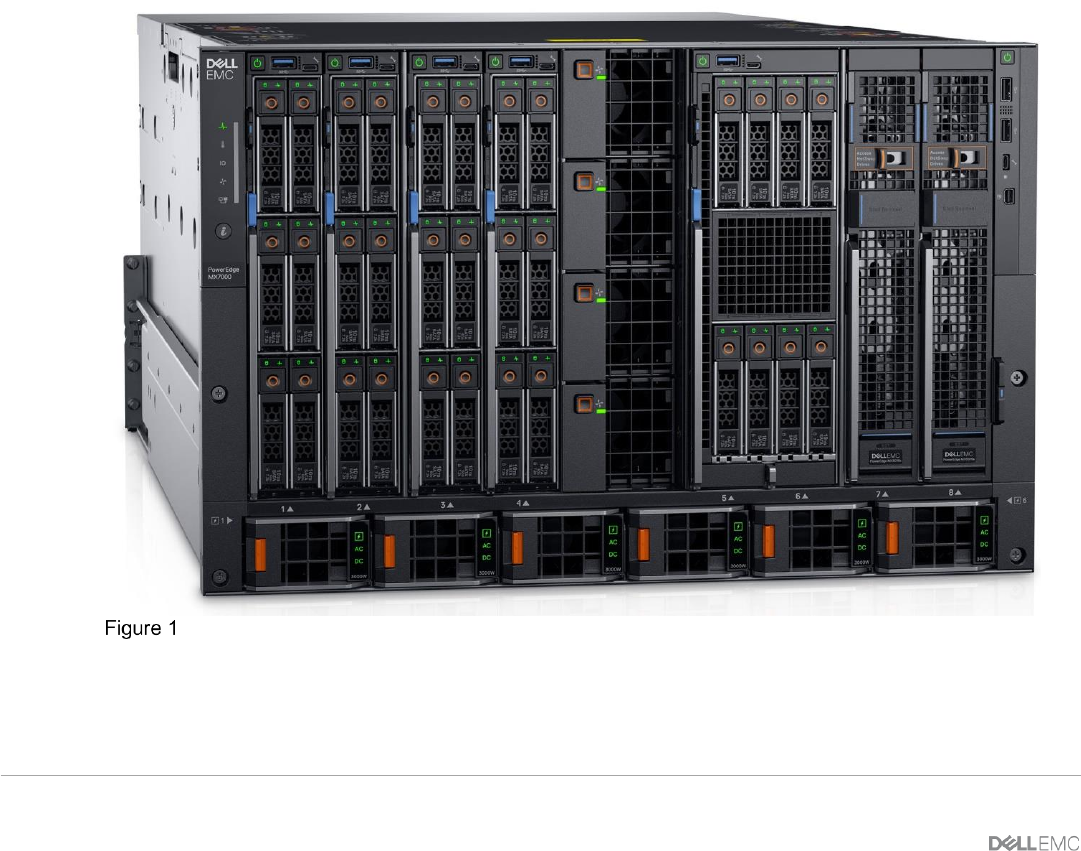Users Guide
Table Of Contents
- 1 Introduction
- 2 SmartFabric Services for PowerEdge MX: An overview
- 3 SmartFabric mode requirements, guidelines, and restrictions
- 3.1 Create multi-chassis management group
- 3.2 Upstream network requirements
- 3.3 VLAN scaling guidelines
- 3.4 Configuring port speed and breakout
- 3.5 Switch slot placement for SmartFabric mode
- 3.6 Switch-to-Switch cabling
- 3.7 NIC teaming guidelines
- 3.8 Maximum Transmission Unit (MTU) behavior
- 3.9 Other restrictions and guidelines
- 4 Creating a SmartFabric
- 4.1 Physically cable MX chassis and upstream switches
- 4.2 Define VLANs
- 4.3 Create the SmartFabric
- 4.4 Configure uplink port speed or breakout, if needed
- 4.5 Create Ethernet uplink
- 4.6 Configure Fibre Channel universal ports
- 4.7 Create Fibre Channel uplinks
- 4.8 Configuring the upstream switch and connect uplink cables
- 5 Deploying a server
- 6 SmartFabric operations
- 7 Switch operations
- 8 Validating the SmartFabric deployment
- 9 SmartFabric troubleshooting
- 9.1 Troubleshooting errors encountered for port group breakout
- 9.2 Troubleshooting Spanning Tree Protocol (STP)
- 9.3 Verify VLT/vPC configuration on upstream switches
- 9.4 Discovery of FEM and compute sleds
- 9.5 Troubleshooting uplink errors
- 9.6 Troubleshooting FC/FCoE
- 9.7 SmartFabric Services – Troubleshooting commands
- 10 Uplink configuration scenarios
- 10.1 Scenario 1 - SmartFabric deployment with Dell EMC PowerSwitch Z9100-ON upstream switches
- 10.2 Scenario 2 - SmartFabric connected to Cisco Nexus 3232C switches
- 10.3 Scenario 3: Connect MX9116n FSE to Fibre Channel storage - NPIV Proxy Gateway mode
- 10.4 Scenario 4: Connect MX9116n FSE to Fibre Channel storage - FC Direct Attach
- 10.5 Scenario 5: Connect MX5108n to Fibre Channel storage - FSB
- 10.6 Scenario 6: Configure Boot from SAN
- A Hardware used in this document
- B Dell EMC Unity information
- C Additional information
- D Validated components
- E Technical resources
- F Support and feedback

8 Dell EMC PowerEdge MX SmartFabric Configuration and Troubleshooting Guide
1 Introduction
Our vision at Dell EMC is to be the essential infrastructure company from the edge, to the core, and to the
cloud. Dell EMC Networking ensures modernization for today’s applications and for the emerging cloud-native
world. Dell EMC is committed to disrupting the fundamental economics of the market with an open strategy
that gives you the freedom of choice for networking operating systems and top-tier merchant silicon. The Dell
EMC strategy enables business transformations that maximize the benefits of collaborative software and
standards-based hardware, including lowered costs, flexibility, freedom, and security. Dell EMC provides
further customer enablement through validated deployment guides which demonstrate these benefits while
maintaining a high standard of quality, consistency, and support.
The Dell EMC PowerEdge MX is a unified, high-performance data center infrastructure. PowerEdge MX
provides the agility, resiliency, and efficiency to optimize a wide variety of traditional and new, emerging data
center workloads and applications. With its kinetic architecture and agile management, PowerEdge MX
dynamically configures compute, storage, and fabric, increases team effectiveness, and accelerates
operations. The responsive design delivers the innovation and longevity that customers need for their IT and
digital business transformations.
As part of the PowerEdge MX platform, Dell EMC SmartFabric OS10 includes SmartFabric Services.
SmartFabric Services is a network automation and orchestration solution that is fully integrated with the MX
Platform.
Dell EMC PowerEdge MX7000 chassis
This document provides information about SmartFabric OS10 SmartFabric Services running on the
PowerEdge MX platform. This document also provides examples for the deployment of two PowerEdge
MX7000 chassis and the setup and configuration of SmartFabric Services. In SmartFabric mode, switches










